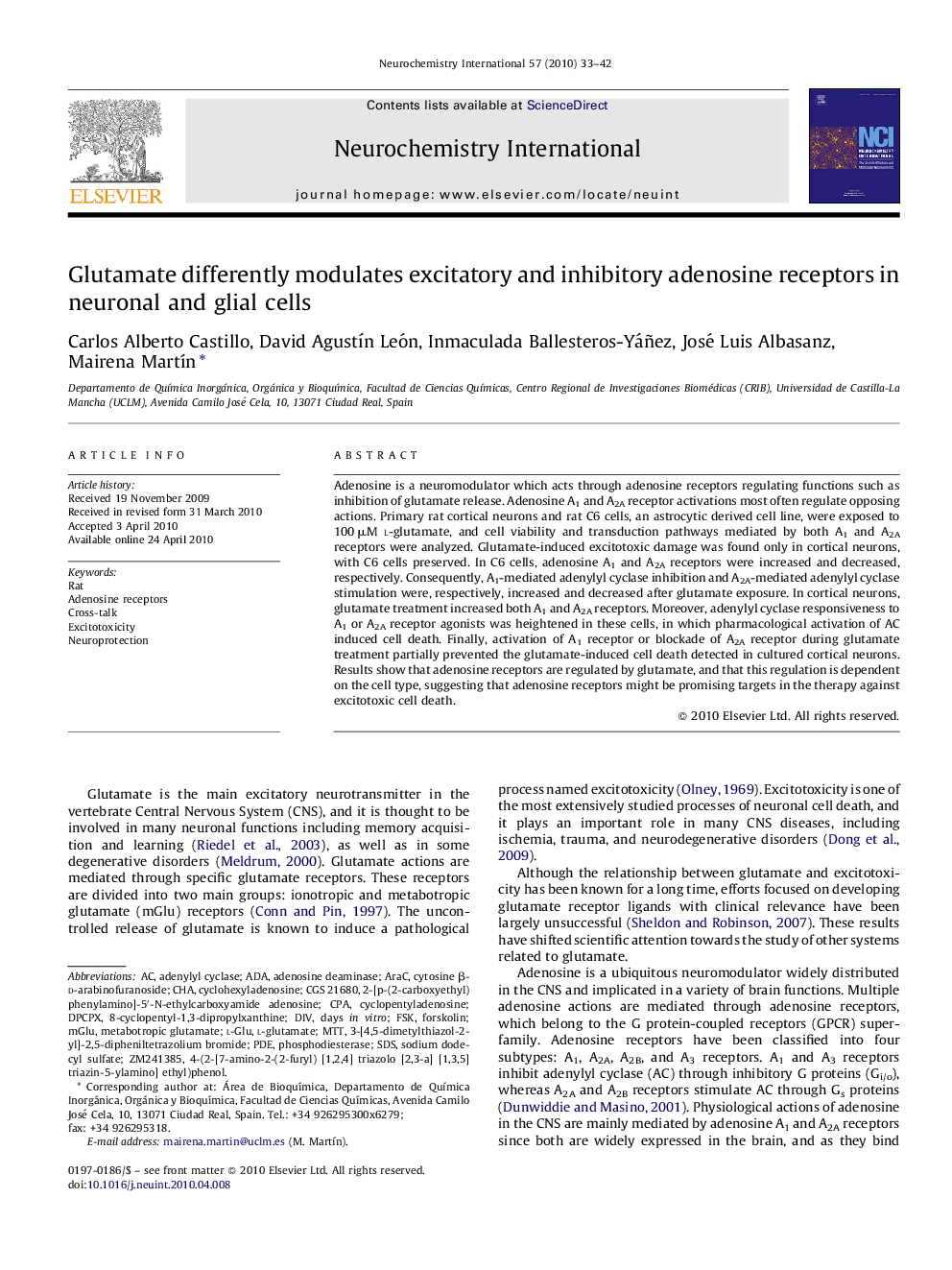| Article ID | Journal | Published Year | Pages | File Type |
|---|---|---|---|---|
| 2201372 | Neurochemistry International | 2010 | 10 Pages |
Adenosine is a neuromodulator which acts through adenosine receptors regulating functions such as inhibition of glutamate release. Adenosine A1 and A2A receptor activations most often regulate opposing actions. Primary rat cortical neurons and rat C6 cells, an astrocytic derived cell line, were exposed to 100 μM l-glutamate, and cell viability and transduction pathways mediated by both A1 and A2A receptors were analyzed. Glutamate-induced excitotoxic damage was found only in cortical neurons, with C6 cells preserved. In C6 cells, adenosine A1 and A2A receptors were increased and decreased, respectively. Consequently, A1-mediated adenylyl cyclase inhibition and A2A-mediated adenylyl cyclase stimulation were, respectively, increased and decreased after glutamate exposure. In cortical neurons, glutamate treatment increased both A1 and A2A receptors. Moreover, adenylyl cyclase responsiveness to A1 or A2A receptor agonists was heightened in these cells, in which pharmacological activation of AC induced cell death. Finally, activation of A1 receptor or blockade of A2A receptor during glutamate treatment partially prevented the glutamate-induced cell death detected in cultured cortical neurons. Results show that adenosine receptors are regulated by glutamate, and that this regulation is dependent on the cell type, suggesting that adenosine receptors might be promising targets in the therapy against excitotoxic cell death.
